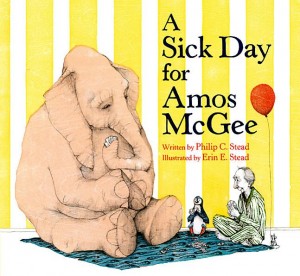Dungeon Master’s Guide to the Library
by Stephanie Wallace, Library Assistant 2
Curled up on my futon with my tech and dice tin on a Tuesday evening, I readjust my headphones and laugh as my friends and I slay orcs within a hidden cave. We’re represented by tokens on a virtual map on my laptop screen, and I record the loss of HP – my hit points – on my tablet when my Tiefling is bludgeoned with a club. The night goes on, and eventually, we leave the cave victorious. We bid each other goodnight and turn off voice chat, only to continue texting each other about the adventure we’ll pick back up next week.
For anyone who has enjoyed playing Dungeons & Dragons or similar tabletop roleplaying games, the scene described is like a welcome home. For those who haven’t, you might be familiar with how it’s shown in TV shows – kids huddled around a table strewn about with maps, miniatures, and player sheets in a basement, rolling dice to determine the fates of their characters. No matter how you play or otherwise enjoy the world of D&D, or if you’re merely curious to learn more, there is plenty to discover. The Manhattan Public Library offers many resources to guide your journey, whether you are a fledgling adventurer or a seasoned explorer.
If you want to start your own campaign with your friends or family, check out the “Dungeon Master’s Guide” and the “Player’s Handbook” by Mike Mearls. These books give you all the tools you need to create characters, outline a story, fight monsters, and find treasure. Information about how to play D&D can also be found freely online, but many dungeon masters and players find it’s helpful to have physical copies of these guides.
What if you want to read about others’ adventures? Worry not! The library has an incredible selection of fantasy books for all ages. Many are set within the multiverse of D&D, and plenty others are about everyday people who have made lifelong friendships because of sitting around a table to play.
Teens and lovers of YA novels may particularly enjoy “Chaotic Good” by Whitney Gardner. Cameron is a costume designer looking for inspiration, but she winds up joining a local comic shop’s D&D group under a false identity. Fans of “Stranger Things” will be excited to read about the boys’ tabletop adventures in the beautifully illustrated graphic novel, “Stranger Things and Dungeons & Dragons” by Jody Houser.
Adults and those who enjoy nonfiction reads will appreciate “Of Dice and Men” by David M. Ewalt. He explains how D&D was inspired by the battlefields of ancient Europe, the hysteria that linked it to satanic rituals, and its apotheosis as father of the modern video-game industry. “The Elfish Gene: Dungeons, Dragons and Growing Up Strange” by Mark Barrowcliffe is about how he and twenty million other boys grew up in the ’70s and ’80s absorbed in the world of fantasy role-playing games.
To see the world itself, I recommend checking out “Art & Arcana” by Michael Witwer. It showcases an incredible collection of ephemera – illustrations from the original guidebooks, novels, and marketing materials – and provides a comprehensive history on the evolution of D&D. On Hoopla, available through our online resources, you can also find “Dungeons & Drawings: An Illustrated Compendium of Creatures” by Blanca Martínez de Rituerto & Joe Sparrow.
Little adventurers will enjoy reading a “Young Wizard’s Handbook: How to Trap a Zombie, Track a Vampire, and Other Hands-On Activities for Monster Hunters” by A.R. Rotruck. Nerdy kids will relate to Sunny in “Sunny Rolls the Dice” by Jennifer L. Holm and Matthew Holm, which is about a girl who has just begun middle school and isn’t sure how to relate to her new classmates. In “Dungeon Academy: No Humans Allowed!” by Madeleine Roux, readers can follow Zelli’s adventure as the only human living among monsters. For a fun role reversal of elves and other creatures pretending to be normal kids in their game, check out “Homerooms & Hall Passes” by Tom O’Donnell.
Families with elementary-aged kids will be excited to participate in “A Celebration of Dragons,” which will be on September 24 in the Auditorium at 2 p.m. We’ll talk about dragons, dragon books, and do some fun dragon activities and crafts. Registration and masks for ages 2 and up are required. For more information or to sign up, go to https://manhattanks.librarycalendar.com/events/celebration-dragons.
Whether you play D&D or read about other adventurers’ quests, the library is here to aid your fantastic journeys.



 Belle da Costa Greene. While few may have recognized that name, now a wonderful new piece of historical fiction highlights the woman’s remarkable career. I am alluding to “
Belle da Costa Greene. While few may have recognized that name, now a wonderful new piece of historical fiction highlights the woman’s remarkable career. I am alluding to “ Once upon a time, I decided I was going to draw a tree every day, and I haven’t missed a day yet. I now have over two hundred drawings and what amounts to a part-time job, because some of the drawings take more than five hours. This is caused by a mix of inexperience and trying to draw more complex ideas in an attempt to keep things interesting. Occasionally, these ideas come to me without much effort, but I have recently found myself leaning more heavily on external inspiration.
Once upon a time, I decided I was going to draw a tree every day, and I haven’t missed a day yet. I now have over two hundred drawings and what amounts to a part-time job, because some of the drawings take more than five hours. This is caused by a mix of inexperience and trying to draw more complex ideas in an attempt to keep things interesting. Occasionally, these ideas come to me without much effort, but I have recently found myself leaning more heavily on external inspiration.